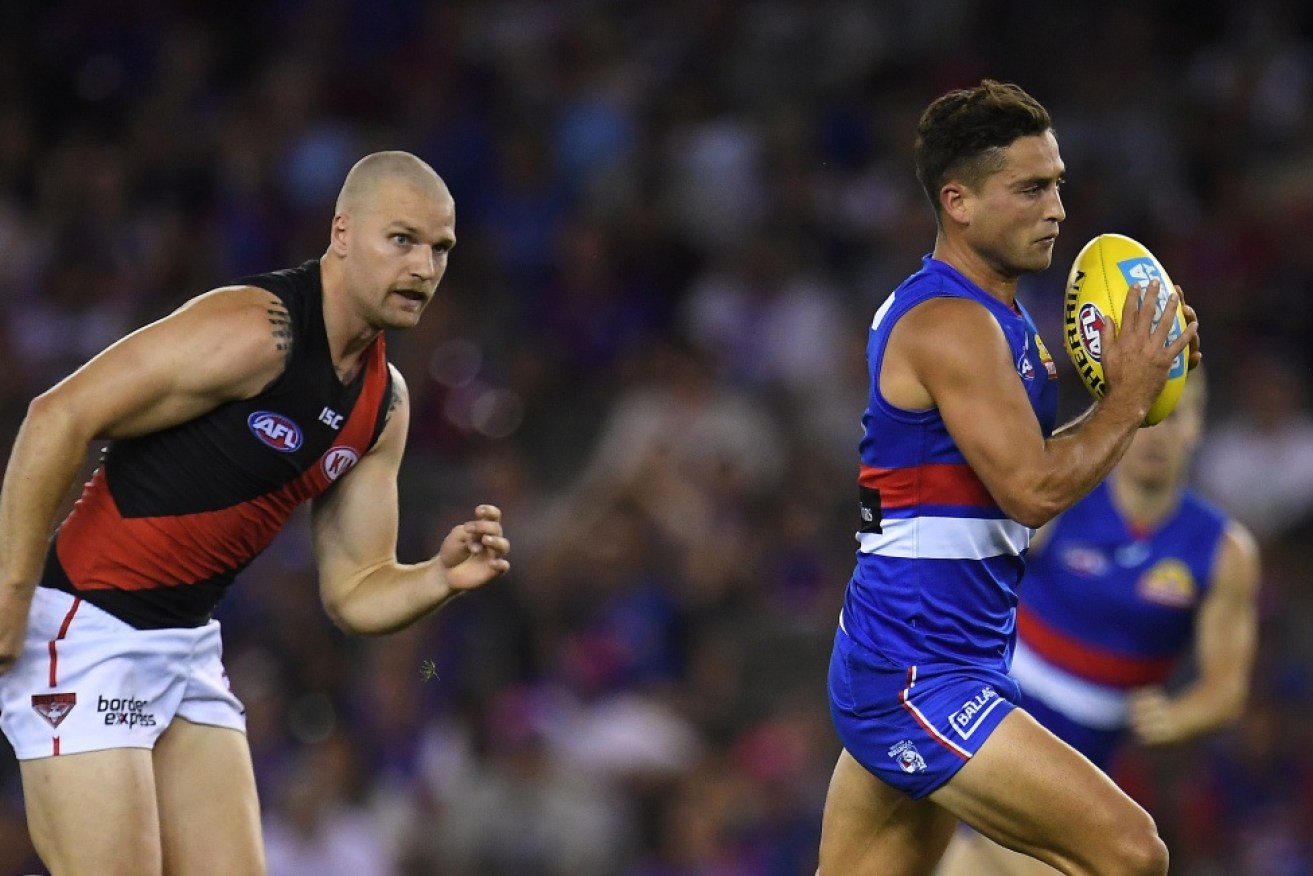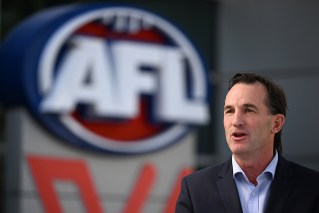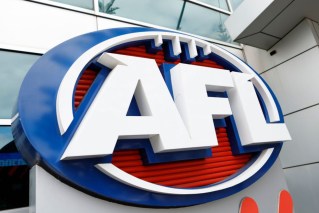AFL: There’s nine new rules, but don’t worry. They won’t change much of anything


Games will faster, see more goals and, ideally, less congested under the new rules. Photo: AAP
The headline on Thursday that the AFL had announced nine rule changes for next season would have sent shudders through every football purist in the land.
On further glance, however, they needn’t have been quite so alarmed. For if the devil is truly in the detail, then this was one of those cute little cartoon versions with barely distinguishable horns.
The truth is that most of the nine alterations to existing rules are covering isolated moments which may not occur more than two or three times during the course of a game.
And the rationale for them – opening up and speeding play, like allowing a player receiving a 50-metre penalty to play on before that distance has been measured out – is actually something which traditionalists would approve.
The elimination of the need for a player kicking in after a behind to kick to himself before playing on, plus the moving of the man on the mark to 10 rather than five metres from the goal square, should in theory allow more end-to-end football. That’s one aspect of the game which has receded dramatically in recent years as teams ramped up their forward-half defensive pressure.
Indeed, in 2018, more than 60 per cent of scores came from forced turnovers. Another 35-odd per cent were from stoppages around the ground. A miserable four per cent derived from kick-ins. That’s a figure which now should rise substantially next year.
The rationale behind the “six-six-six” formation at centre bounces, each side required to have six players inside each 50 metre arc, is also sound enough. Fans looking for more open football, however, could find the reality not quite so dramatic.
No doubt we’ll see some more goals scored from centre bounces with fewer players able to reach play in time to clog things up.
But if you take the average 24 goals scored per game and allow, say, five seconds for the resolution of each bounce, there’s no more than two minutes out of 120-odd per game for the rule to have an impact. And, of course, if the six players per team allowed to contest the centre bounce can’t affect a clearance immediately, it’s as you were.
The repealing of the “hands in the back” interpretation will allow for more physical marking contests near goal, though the 10 years-plus since that was introduced suggested it wasn’t necessarily that big an issue anyway.
And allowing ruckmen to grab the ball and play on at ruck contests without being deemed to have had “prior opportunity” also makes sense, if nothing else making it less likely teams will field undersized pinch-hitters or concede hit-out duels altogether against bigger, stronger opponents.
The new rules and interpretations will certainly increase the already considerable decision-making loads on AFL umpires. But though there’s nine new focus areas for them, and us, to deal with, the sum total isn’t nearly so sweeping as had been feared throughout the last few months of constant speculation about our game being turned into another sport entirely.
My biggest beef with Thursday’s announcement isn’t so much what the AFL has done as what it hasn’t. Football boss Steve Hocking said “we have listened to our fans, past players, coaches, umpires and clubs”. But I suspect the bulk of supporters would contend they hadn’t been listened to at all.
A vast majority of them didn’t want to see any changes. And the existing rules which do irk them (and me) the most – the 10-metre protected area penalty and the “sliding rule”, which was always an overreaction to one incident in a game six years ago – for now at least, will remain. Both have proven unnecessary, often unfair, and should have gone.
And now to a personal hobby horse.
In my view, the biggest single difference and most effective antidote to creeping congestion in the game is simply to have umpires calling more quickly for ball-ups around the ground.
By that, I don’t mean the time taken to affect the ball-up once it has been called (though that is excessive) but blowing the whistle far earlier to call the ball-up without allowing several players from each side to converge on a disputed ball.
Watch replays from any game until the mid-‘90s and that was always the case, play called to a halt, the ball bounced quickly and play re-starting before half-a-dozen from each team had gathered like bees around a honeypot in an increasingly futile effort to prise the ball free.
It would simply be a reversion to an older, stricter interpretation of what constituted congestion. It wouldn’t even require any re-drafting of the rule book. And given the amount of stoppages in an average AFL game these days, its impact would be far more profound than the changes announced on Thursday put together.
Why it doesn’t even seem to have been raised at any point in the past few months I know not. It actually would be a genuine game-changer, without angering the “leave the rules alone” crowd.
Which is in contrast to what has ended up happening. However noble the intent, these new rules really won’t make that much of a difference, and will annoy the fan base. Which, I guess, is at least consistent with the past.
- Read more from Rohan Connolly, formerly a senior football writer for Fairfax, at Footyology, or watch Footyology TV







